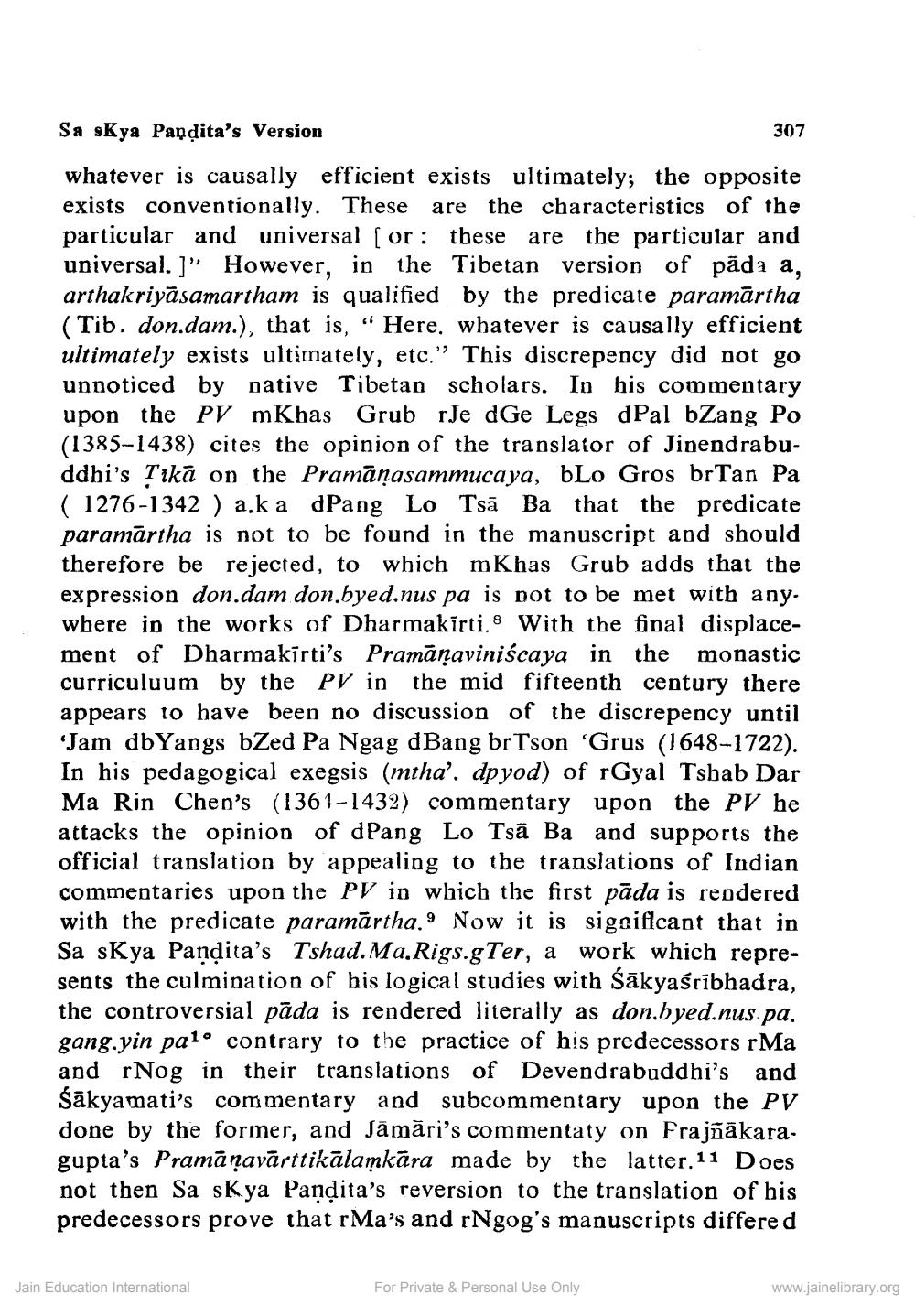________________
Sa skya Pandita's Version
307
whatever is causally efficient exists ultimately; the opposite exists conventionally. These are the characteristics of the particular and universal (or : these are the particular and universal. ]” However, in the Tibetan version of pāda a, arthakriyāsamartham is qualified by the predicate paramārtha (Tib. don.dam.), that is, “Here, whatever is causally efficient ultimately exists ultimately, etc.” This discrepancy did not go unnoticed by native Tibetan scholars. In his commentary upon the PV mKhas GrubrJe dGe Legs dPal bZang Po (1385-1438) cites the opinion of the translator of Jinendrabuddhi's Tikā on the Pramāṇasammucaya, bLo Gros brTan Pa ( 1276-1342) ak a dPang Lo Tsā Ba that the predicate paramartha is not to be found in the manuscript and she therefore be rejected, to which mKhas Grub adds that the expression don.dam don.byed.nus pa is not to be met with any. where in the works of Dharmakirti.8 With the final displacement of Dharmakirti's Pramāņaviniscaya in the monastic curriculuum by the PV in the mid fifteenth century there appears to have been no discussion of the discrepency until 'Jam db Yangs bZed Pa Ngag dBang br Tson 'Grus (1648-1722). In his pedagogical exegsis (mtha'. dpyod) of rGyal Tshab Dar Ma Rin Chen's (1361-1432) commentary upon the PV he attacks the opinion of dPang Lo Tsā Ba and supports the official translation by appealing to the translations of Indian commentaries upon the PV in which the first pāda is rendered with the predicate paramārtha.9 Now it is significant that in Sa sKya Pandita's Tshad. Ma.Rigs.gTer, a work which represents the culmination of his logical studies with Śākyaśrībhadra, the controversial pāda is rendered literally as don.byed.nus pa, gang.yin palo contrary to the practice of his predecessors rMa and rNog in their translations of Devendrabuddhi's and Sākyamati's commentary and subcommentary upon the PV done by the former, and Sāmări's commentaty on Frajñākara. gupta's Pramāņavārttikālamkāra made by the latter. 11 Does not then Sa skya Pandita's reversion to the translation of his predecessors prove that rMa’s and Ngog's manuscripts differed
Jain Education International
For Private & Personal Use Only
www.jainelibrary.org




